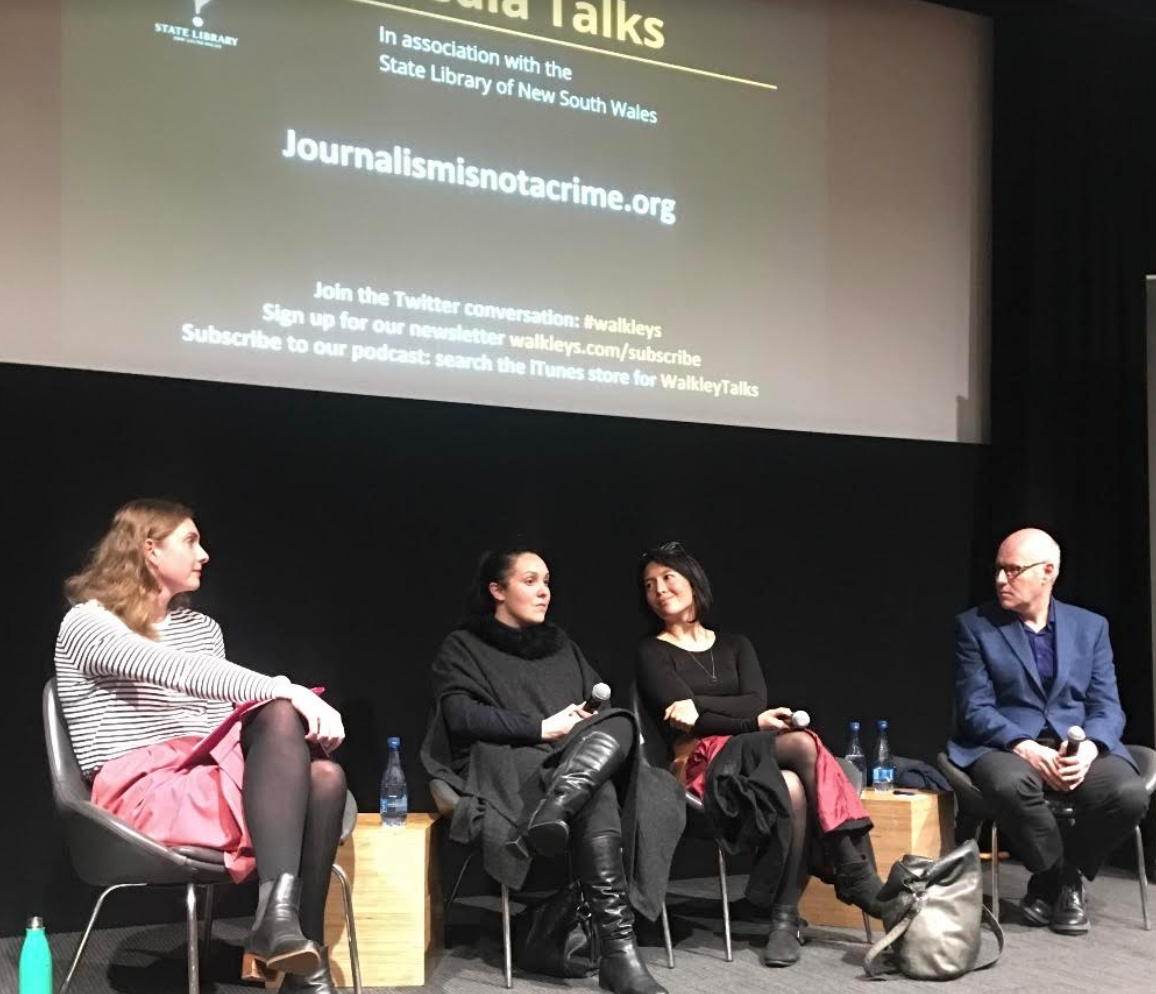Leading Australian journalists have spoken candidly about the personal toll of covering confronting, frightening and sometimes life-threatening stories.
Participating in a panel discussion held as part of the Walkley Foundation’s national campaign What Price Would You Pay?, ABC journalists John Lyons and Sarah Dingle and freelancer Nina Funnell talked about “vicarious trauma” and the impact of difficult stories on their mental health.
The campaign, which includes adverts on billboards and TV, in print and online, is seeking public backing for quality journalism, by highlighting the price which journalists pay to deliver the truth.
Funnell recounted her own experience of sexual assault, explaining how it prompted her to investigate the subject more widely as a journalist.
She told the audience at the State Library of NSW: “If anyone’s not familiar, vicarious trauma is trauma that you can develop in response to being exposed to other people’s trauma.
Our June Media talk “What Price Would You Pay?” at @statelibrarynsw just kicked off. @sarahdingle_ @ninafunnell @TheLyonsDen pic.twitter.com/x7LFf8lkJB
— Walkley Foundation (@walkleys) June 20, 2019
Funnell added: “If you think about every time we see a plane crash on the news, we are seeing mangled wreckage. We’re not seeing dead bodies, but somebody is.”
For one of her journalism projects, Funnell aimed to write 52 stories in 52 weeks on sexual assault on university campuses. She ended up taking longer than a year, “and that was because there were times that I wanted, I needed, to stop,” she explained.
“It was incredibly laborious, stressful and traumatic work.”
Dingle mirrored those sentiments when asked about her own experiences.

She recalled making an ABC radio documentary in 2013 called The Family Trap, around the same time the Royal Commission into Institutional Responses to Child Sexual Abuse began.
“I decided to … look at what the Royal Commission did not cover, which was child abuse in the home … the vast majority of all child sexual abuse,” she said.
“I interviewed several underage girls who had been raped by their fathers… In one case, I interviewed [the girl’s] father, and I interviewed her mother.
“That was probably, and remains, the hardest thing that I’ve had to do emotionally.”
Following that project, Dingle worked on further child sexual abuse investigations, but then became overwhelmed by vicarious trauma.
“I honestly had to stop, and I haven’t really gone back there since… I’d given too much of myself to it for that time being.”
Funnell believes vicarious trauma is an occupational health and safety issue that should be addressed by employers. “I would hope … that there’s more emotional literacy and awareness around that [now],” she said.
“Just as if you were exposing your staff members to asbestos, and they develop asbestos poisoning, if you are exposing them to traumatic content over and over and over again and they develop vicarious trauma, that’s an OHS issue that you’re responsible for as an employer.”
The Walkley Foundation campaign has the goal of “shining a light on the price that journalists pay to deliver the truth, and asking the public to think about what price they would pay for that truth”.
It aims to underline that “each and every day our journalists pay a price to bring you important stories”. – @erinchristie2


